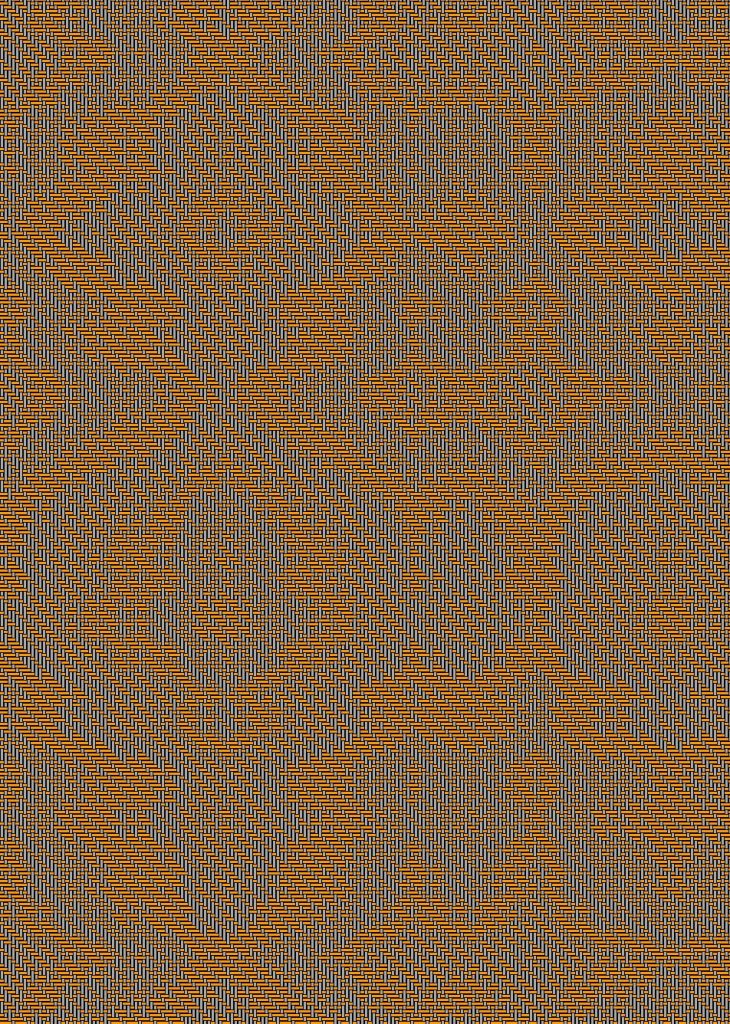Still following Bonnie Inouye’s book ‘Exploring Multishaft Design’, next we come to network drafting. I’m also reading Alice Schlein’s book ‘Network Drafting – an Introduction’.
Network drafting is about using weave structures in a different way, using a network of possible threading positions as, as Alice says in her introduction, ‘a framework upon which the threading draft for a woven cloth can be hung.’ It is about using curves rather than blocks.
I’m not going to go into details – suffice to say that once you get the concept using a pencil and graph paper Fiberworks will redraw a design line onto a network threading for you.
I created lots of drafts in Fiberworks, and in the end chose this one to weave:

It’s a long, curved design line, cloud-shaped, starting and ending on shaft one, and uses a four-end initial network, which basically means the weave structure can be anything that can be woven on four shafts. The tie-up is mainly 3/1 and 1/3 twill and plain weave, and by rotating the tie-up so that the lines go from top left to bottom right, closed shapes form in the cloth. The cloth is treadled as threaded, though the treadling repeat advances by 4 shafts each time, so that the whole treadling repeat is over 1200 picks long.
I wove the design in 16/2 cotton sett at 36epi. I treadled the threading, otherwise I reckon you’d drive yourself mad trying to thread a design like this, and I’m not a big fan of dyeing or colouring heddles to make counting easier. Apart from anything else I think the biggest flaw in the design of Louet looms is that it’s such a pain to move heddles around or take them off to dye them – you don’t want to do it unless you really have to.

Here’s what the cloth looks like on the loom – I wove this as a scarf but haven’t wet finished it yet (I hate twisting fringes). I also wove a small sample using some mystery linen, labelled as 26/2. I think I might have bought this from Yarns to Yearn For several years ago, and they don’t have it any more, which is a real pity as it is soft and not wiry in the slightest, and easy to weave with, in the weft at least. This is the sample after washing:

I like this so much that I’ve just wound a new cotton warp on in stone-like colours to make a couple of scarves with the orange linen as the weft, in a kind of lichen-like design:

I’m looking forward to seeing what these scarves are like!